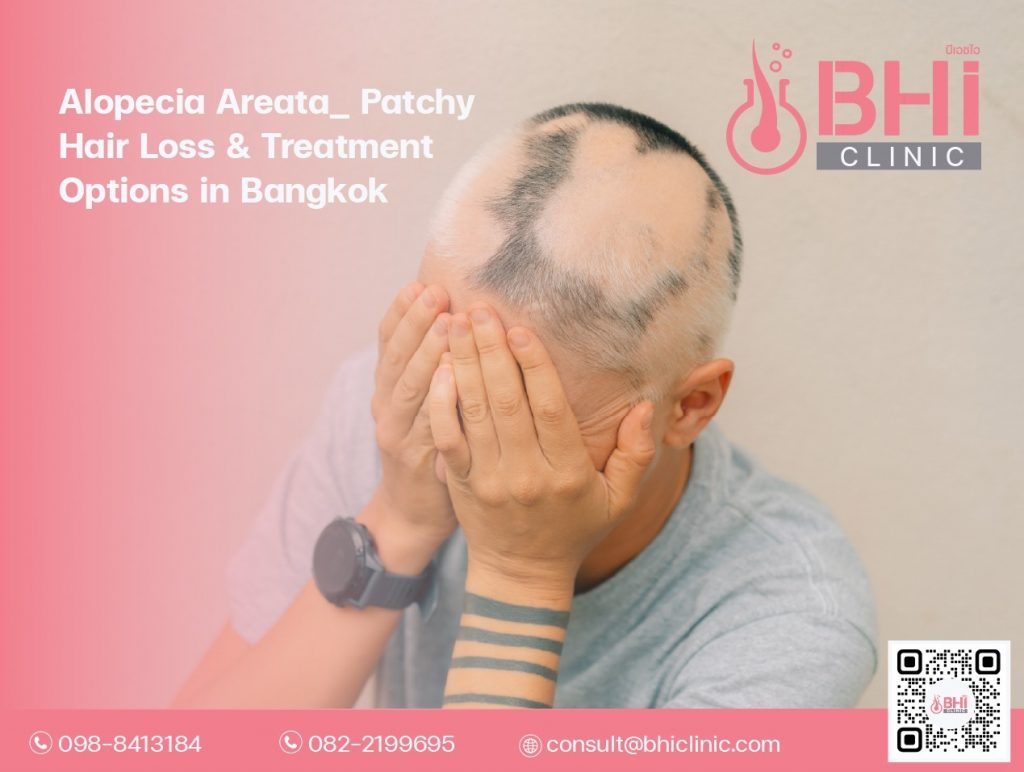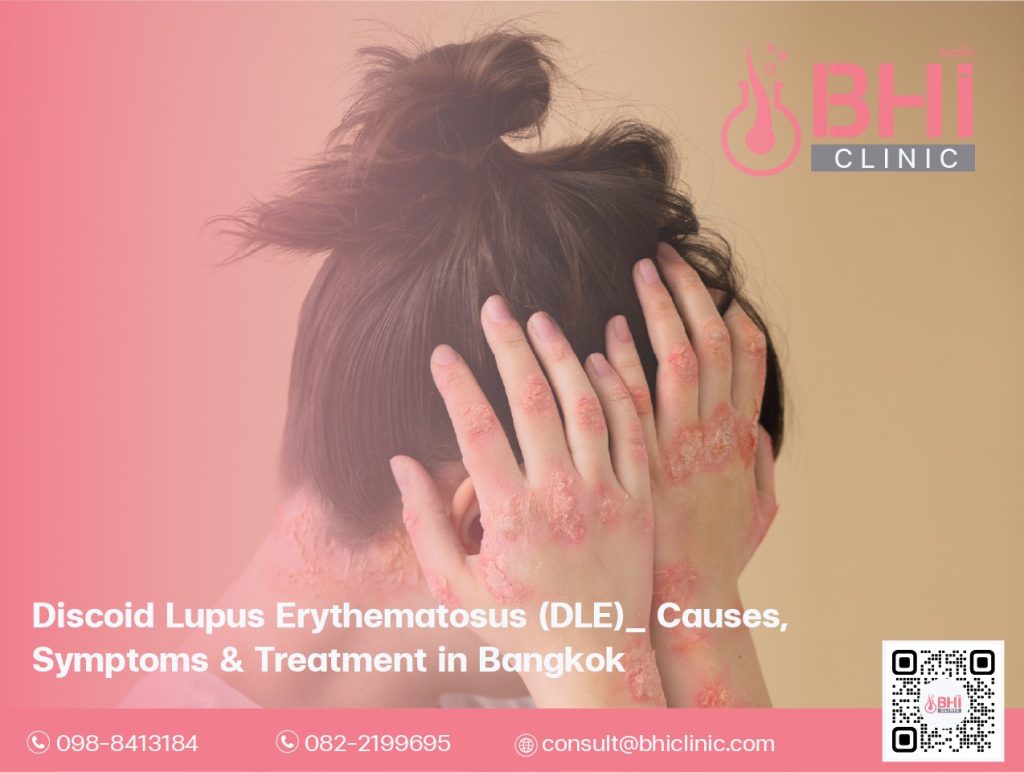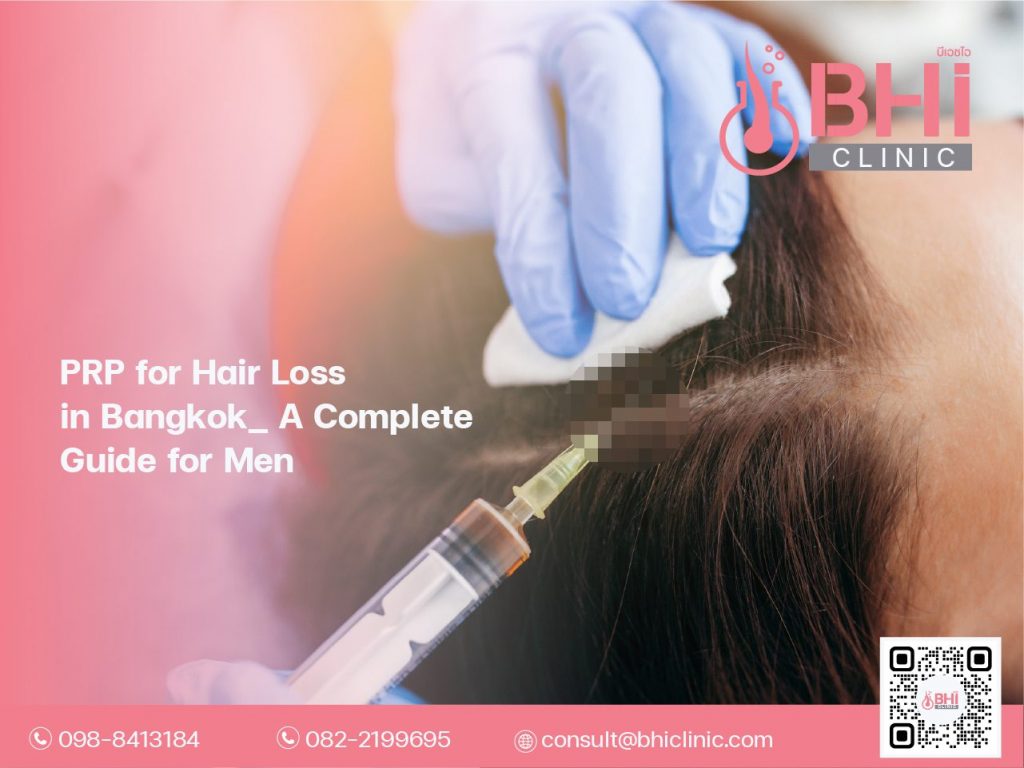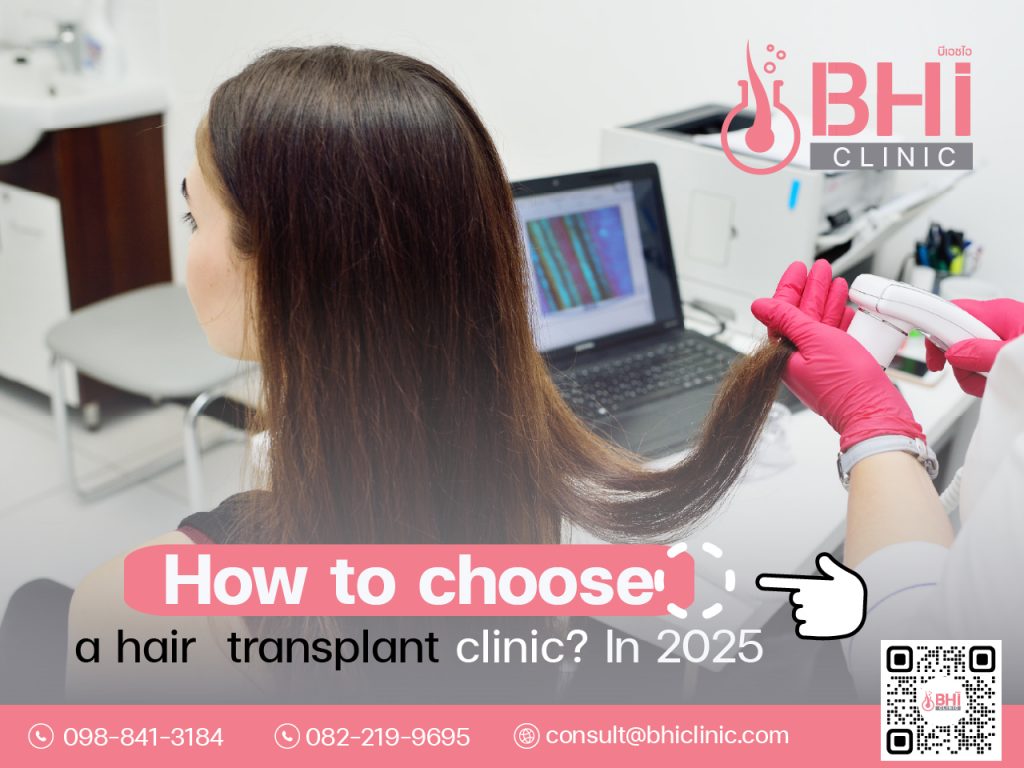What Is Alopecia Areata?
Alopecia areata is an autoimmune disorder that causes sudden hair loss in round or oval patches. It most commonly affects the scalp but can involve the beard, eyebrows, eyelashes, and other hair-bearing areas. The condition is non-scarring, meaning the hair follicles are not permanently damaged—so regrowth is possible, although unpredictable.
While it doesn’t cause physical illness, the sudden cosmetic change can significantly affect a person’s confidence and emotional well-being.
Who Can Get Alopecia Areata?
Alopecia areata affects people of all genders, ages, and ethnic backgrounds. It often starts in childhood, teenage years, or early adulthood, but it can occur at any time. In Thailand and other Asian populations, awareness is important as this condition is not uncommon.
Risk factors include:
- Family history of alopecia areata
- Other autoimmune conditions (like thyroid disease, vitiligo, or eczema)
- Allergic conditions (such as asthma or allergic rhinitis)
- High-stress periods or recent illness
What Causes It?
The immune system mistakenly attacks the hair follicles, disrupting the normal hair growth cycle. This is thought to result from a mix of genetic and environmental factors. Stress, infections, or major life changes may trigger or worsen the condition, but it’s not caused by poor hair care, diet, or hair products.
Signs & Symptoms
Alopecia areata typically presents with:
- Round or oval bald patches
- Smooth, hairless skin in affected areas
- “Exclamation point” hairs (short, broken hairs at the patch edges)
- Mild itching or tingling before hair falls out
- Nail changes (such as pitting or ridges) in some cases
Hair loss may affect only a few small areas, or it can become more widespread over time. Some patients experience complete loss of scalp hair (alopecia totalis) or even total body hair (alopecia universalis), though these are less common.
Does Skin Type Affect How It Looks?
The condition appears the same across all skin tones. On lighter skin, bald patches may look pale, while on darker skin they blend more with the natural skin tone. The core signs—smooth, round patches of hair loss—remain consistent, regardless of ethnicity.
Emotional and Practical Impact
Hair loss can take a toll on self-esteem and mental health. People with alopecia areata may experience anxiety, depression, or social withdrawal. Children and teens are especially vulnerable to bullying or teasing. Counseling, support groups, and cosmetic solutions (wigs, eyebrow tattoos, etc.) can help patients cope during treatment.
How Is It Diagnosed?
Diagnosis is typically clinical, made by a dermatologist who examines the pattern of hair loss and scalp condition. In some cases, additional tests like a scalp biopsy, fungal culture, or blood work may be performed to rule out other conditions such as ringworm or autoimmune diseases.
Common Conditions That Mimic Alopecia Areata Doctors may rule out other causes of patchy hair loss, such as:
- Fungal scalp infections (tinea capitis)
- Trichotillomania (compulsive hair pulling)
- Traction alopecia (from tight hairstyles)
- Telogen effluvium (stress-induced shedding)
- Scarring alopecias (e.g., lupus or frontal fibrosing alopecia)
Alopecia Areata Treatment in Bangkok
Although there is no guaranteed cure, many treatments can help restore hair and manage the condition. Bangkok offers advanced dermatology services with a full range of options, including:
1. Corticosteroids
- Injections: First-line for small patches; done directly into the scalp every 4–6 weeks.
- Topical steroids: Creams or lotions for children or less severe cases.
- Oral steroids: Used short-term for rapid or widespread hair loss.
2. Topical Immunotherapy
Ideal for extensive or resistant cases. A chemical (like DPCP) is applied weekly to trigger a controlled allergic reaction that can restart hair growth.
3. Minoxidil
Applied once or twice daily to affected areas to stimulate regrowth. Often combined with other treatments.
4. JAK Inhibitors
These oral medications are promising options for moderate to severe cases. They work by suppressing the immune attack and are available at select specialist clinics.
6. Other Therapies
- Anthralin (irritant cream for patchy hair loss)
- Phototherapy (UV light treatments)
- Supplements (zinc, vitamin D, biotin – supportive but not curative)
- Low-dose oral minoxidil – increasingly used for diffuse thinning
7. Cosmetic Solutions
Wigs, eyebrow tattoos, stick-on lashes, or hair fibers can boost confidence while waiting for regrowth.
Can It Be Prevented?
There’s currently no proven way to prevent alopecia areata. However, maintaining good general health, managing stress, and seeking early treatment at the first sign of hair loss may help reduce flare-ups or worsening.
What’s the Outlook?
- Around half of patients with mild patchy hair loss regrow hair within a year
- Recurrences are common—some people may have one episode, others may face repeated cycles
- More severe forms (totalis or universalis) are harder to treat but can still respond to advanced therapies
- Many people adapt well emotionally with time and support
Final Thoughts
Alopecia areata can be frustrating, but there are more treatment options now than ever before. In Bangkok, dermatologists and hair specialists offer world-class care for alopecia areata—ranging from steroid injections and topical treatments to cutting-edge JAK inhibitors
If you’re experiencing sudden patchy hair loss, early evaluation can lead to quicker intervention and better results. With the right support and care, many patients regain not just their hair, but also their confidence.




